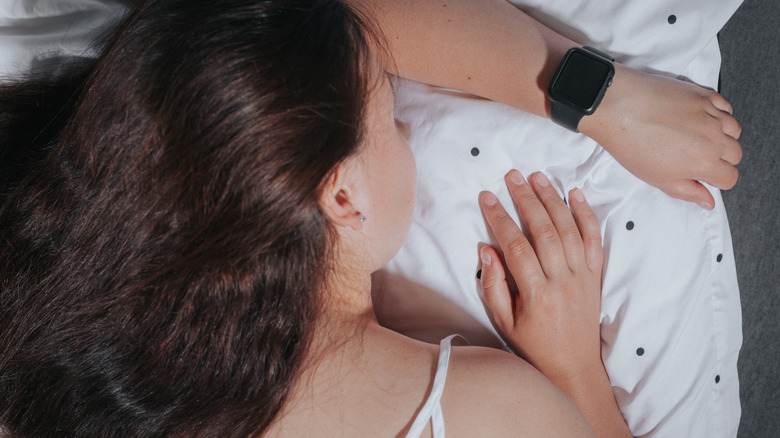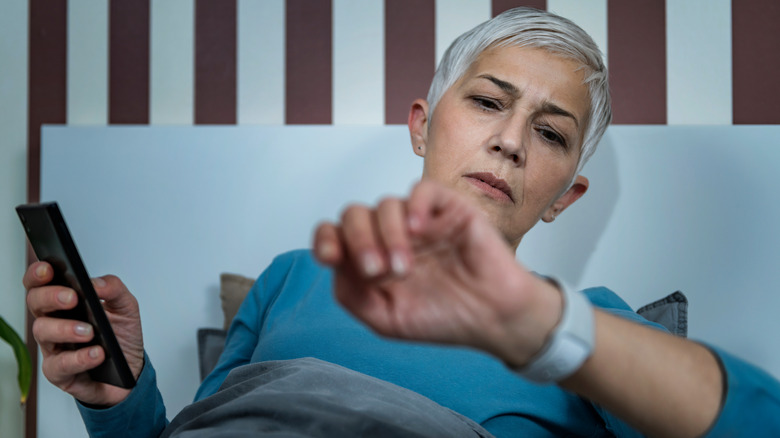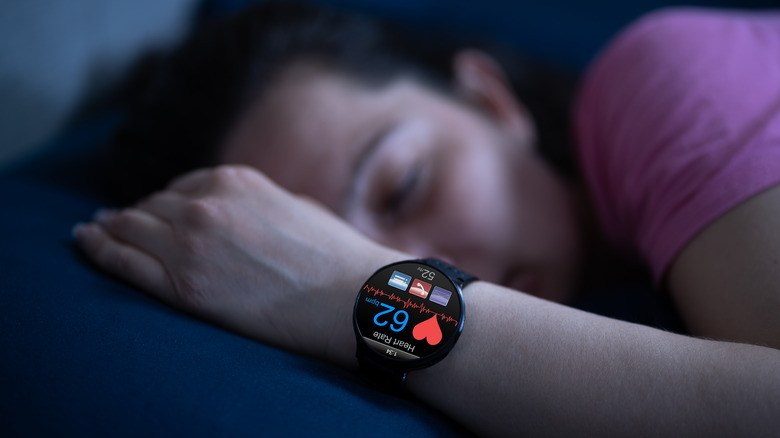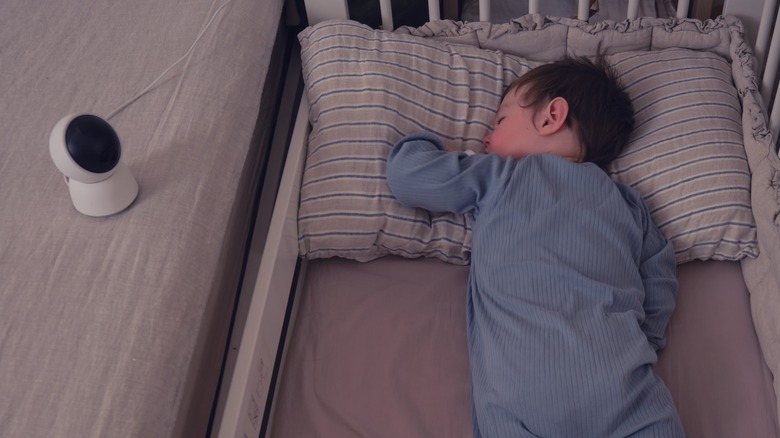3 Reasons Why You Should Wear A Smartwatch When You're Sleeping
Wearables like smartwatches and activity trackers have plenty of uses when it comes to fitness and health tracking. They're full of sensors that can monitor a variety of readings and metrics, and they can interpret and present a multitude of data sets based around those readings. There are plenty of reasons to wear a smartwatch throughout the day, but the thing is, they can also be handy to keep when you go to bed.
Many of those sensors can continue to keep tabs on your vitals while you're sleeping, or are used to track other handy bits of information. All of which is certainly no substitute for proper health checkups or speaking with medical professionals, but does have still uses. With all of that said, here are three reasons why, if you currently own or are planning to get a smartwatch, you should consider keeping it wrapped around your wrist when you head off to bed.
Sleep tracking and schedules
One of the most obvious reasons to wear a smartwatch to bed is the sleep tracking capabilities. Some brands and models may offer slightly different features, but you can expect most of them to at least keep track of your sleeping patterns.
Smartwatch sleep tracking is no substitute for official medical sleep testing and equipment, but it can be a useful tool all the same. Charting out your patterns can make it easier to figure out when you get your best rest, determine what factors may help or hinder (for example, was it raining on the night you slept more soundly than usual), and so on. Think of it as extra data points you can show to your doctor if you ever need to talk to them about how you've been sleeping.
You can also use your smartwatch to set up sleep schedules (times for heading off to bed, waking up, or both). Set a reminder for when you should go to bed so you don't accidentally stay up too late. Choose a time you want to wake up, and the watch will do its thing in the morning. Or, ideally, combine sleep reminders and wake-up alarms with your sleep tracking info to encourage yourself to get the amount and kind of shut-eye your body needs to function more effectively.
Health monitoring
Another well-known benefit to smartwatches is health tracking. As with sleep tracking, a smartwatch is no substitute for official medical instruments, but they can still help. And while you probably won't be exercising in bed while sleeping, health monitoring still has its uses when you're snoozing.
A particular health tracking benefit to keeping your smartwatch on during sleep is that it can help you establish a more complete baseline. Stats like your resting heart rate (RHR) are tracked throughout the day, sure, but it's better to have a more complete picture of your heart health — which includes moments outside of day-to-day activity and exercise.
This goes double for heart rate variability (HRV), which is used to determine how fast or slow your heart beats during moments of stress (physical activity, actual stress, etc) and moments of rest. But in the case of HRV, a large sample size of data is needed to establish a baseline. Meaning, if you want to keep tabs on it, you're going to have to wear your watch to bed every night for several weeks.
Alarms and alerts
Outside of general wake-up alarms, smartwatches can also be useful for other kinds of notifications while you're sleeping, and it goes beyond simply getting a wrist tap when you receive a text, call, or email. Some apps can be set up to notify wearers of environmental sounds they may not hear — whether because they're in a deep sleep or have impaired hearing. Arguably useful for unexpected happenings, such as a pet knocking something over in the middle of the night, a smoke detector going off, and so on.
If you have very young children, it's also possible to set up a smartwatch as a baby monitor by connecting it to a separate monitoring device. That way your watch can let you know if there's any unexpected sounds or movement going on in the other room, and you can glance at your wrist to check on them via video (if the connected device uses video) or listen in via audio, without having to get out of bed.



